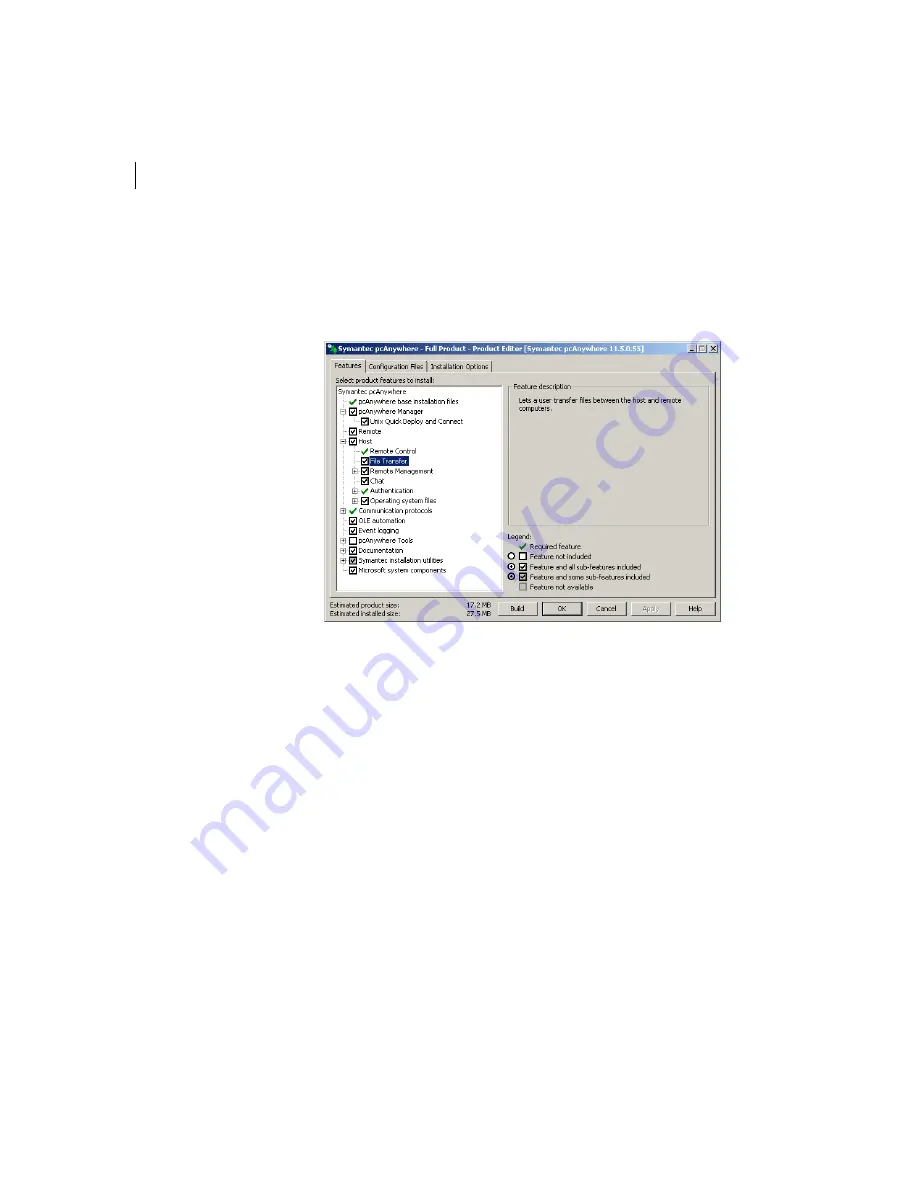
40 Configuring custom products
Configuring custom products
To select product features
1
In the Symantec Packager window, on the Configure Products tab, do one of
the following:
■
Create a new product configuration.
■
Double-click an existing product to edit it.
2
In the Product Editor dialog box, on the Features tab, do any of the
following:
■
Check the product features that you want to include in the custom
product.
■
Uncheck the features that you do not want to include.
■
Click the plus sign next to a feature to select or remove its subfeatures.
3
Do one of the following:
■
Click
OK
to save your changes and close the Product Editor dialog box.
■
Click
Apply
to save your changes and continue configuring the product
configuration.
4
If prompted, type a file name, and then click
Save
.
Summary of Contents for Packager
Page 1: ...Symantec Packager Implementation Guide ...
Page 6: ...6 Contents ...
Page 18: ...18 Introducing Symantec Packager Where to find more information ...
Page 24: ...24 Installing Symantec Packager Uninstalling Symantec Packager ...
Page 30: ...30 Symantec Packager basics Accessing commands in Symantec Packager ...
Page 34: ...34 Importing products in Symantec Packager Deleting products from Symantec Packager ...
Page 46: ...46 Configuring custom products Building and testing custom products ...
Page 98: ...98 Index ...






























